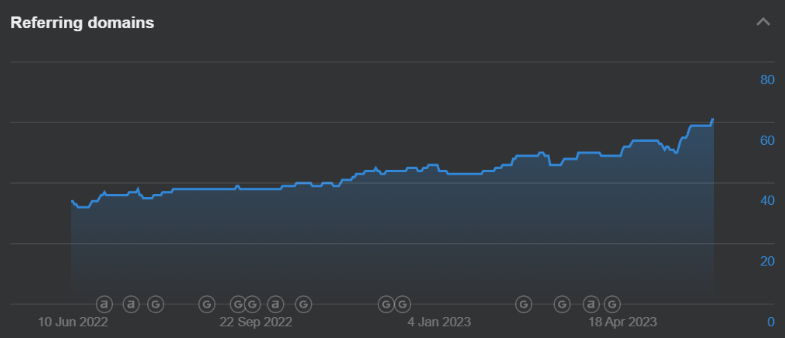
Case Study – Building Local Traffic in the Medical Industry
In recent years, search engine optimization (SEO) targeted at and catering to the local level has been increasingly key to success in various industries. Local SEO not only allows you to attract high-quality traffic from relevant users in close proximity to your business’s physical location, but it also helps improve brand awareness. In more than one sense, it helps put the business on the map.
This does differ by industry. In the medical industry, where competition is particularly localized and intense, proper local SEO is not only beneficial but essential to appear in search engine results (SERPs).
In this article, we will go over our work with a medical practice that achieved significant success through effective local positioning. We will talk about the strategy we implemented and the benefits it ultimately brought the client. We hope it’ll illustrate how local SEO can help increase the visibility of your business, attract more local clients to it, and ultimately, lead to success.
Planning the Strategy
Each successful SEO campaign starts with a robust strategy, and here, we chose to take a multi-pronged approach with the local context the client was operating in at the heart of it:
- Adapting to the local context: Local SEO differs from traditional SEO in that the intentions and needs of local users are the first and foremost considerations. As the medical practice we were working with was based in Poznań, the first step when planning our strategy was to research the specifics of the medical industry and the competition in the local market in Poznań.
- User intentions: What are users looking for when they enter specific keywords in the search engine? Tailoring content to user intentions is a key element of effective SEO. We needed to know whether our client’s website answered users’ needs, and if not, how to go about tweaking and updating them.
- Context analysis: Analyzing the top keywords with the most traffic, understanding the approach taken by our clients’ direct competitors, and carefully considering the context behind each keyword are key to creating a precisely targeted SEO strategy. This not only included optimizing existing content, but an equally important element was the creation of new, dedicated landing pages. The new subpages were created specifically for high-value keywords. This is an important element of the strategy because the content of a given subpage needs to directly respond to the users’ queries on search engines.
- Landing page design: Landing pages need to be properly designed, both visually and technically. We helped our client create a multitude of landing pages each carefully designed with the proper use of keywords, meta descriptions, page titles, and headers to make it as attractive as possible to search engine algorithms. Moreover, we ensured that the content was not only SEO-friendly but, first and foremost, user-friendly – easy to read, useful, and interesting. This is particularly important in the medical industry due to its YMYL (Your Money Your Life) nature.

Understanding The Importance of YMYL
YMYL is an acronym that stands for “Your Money or Your Life.” It is a term used by Google’s algorithm to categorize websites or content that could have a direct impact on the user’s “money” or “life.”
YMYL encompasses a wide range of content that can affect users’ finances, health, safety, happiness, and lifestyle. Pages related to banking, investments, health and medicine, law, government, and news are often classified as YMYL as they have the potential to influence users’ financial and life decisions.
Search engines require YMYL pages to meet very high standards, as incorrect or misleading information on these pages can have serious consequences for users. They need to demonstrate a high level of E-E-A-T, which stands for experience, expertise, authority, and trustworthiness, if they want to rank high on SERPs.
In practice, what this means for businesses is that content on YMYL pages should be created by experts in the field. A page should be an authoritative source of information, and both the page and its creators should be trustworthy. All this contributes to Google’s assessment of the quality of the page and directly impacts its ranking in search results.
The content we prepared for our client took all of this into consideration. The content was precise, informative, and authoritative – compiled by relying on experts in the field and medical studies. This contributed to the success our client saw.
After preparing this content, we then moved on to the next stage, namely the construction of appropriate landing pages and planning the link profile.
Technical Analysis and Content Implementation
Successful content creation should be followed by a comprehensive technical audit of the site. Users should have a responsive, snappy experience visiting the website, and search engine bots should have an easy time crawling the website and analyzing the content.

Long loading times, dead links, unintuitive navigation menus, and unoptimized javascript snippets: These are just a few of the issues that need to be addressed during this stage. Neither users nor search engine bots should face any problems when visiting a website.
For this client, we decided to perform a comprehensive technical audit using the Screaming Frog tool. It is a crawler that scans the site in a similar way to Google’s bots and judges the website on a number of quantifiable metrics. Using that as a baseline, and complementing the data by using tools such as PageSpeed Insights, Siteliner, GTMetrix, Pingdom Tools, and Structured Data Testing Tool, we decided to overhaul the website to better meet users’ and SEO needs:
- Search Engine Readability: Search engines use bots that browse websites and index their content. The robots.txt file on the site informs these bots which pages they can and cannot view. We made sure the robots.txt file is properly configured and does not block access to important pages.
- Loading Speed: Google and other search engines prioritize sites that load quickly, as page speed affects the user experience. We identified a number of issues using tools like Google PageSpeed Insights that were slowing down the site and worked with our client to promptly fix them.
- Mobile Optimization: More and more people are browsing the internet on mobile devices, so Google and other search engines prioritize sites optimized for mobile devices. Our audits almost always include checking for shortcomings in our clients’ mobile implementations, and in this particular case, we worked with the client to solve all of them.
- URL Structure: Clean and well-organized URLs can help search engines understand what a page is about. URLs should be short, contain relevant keywords, and be easy for both users and search engines to understand.
- Site Structure: A good site structure helps search engine bots better understand the content of the site. The site must have a logical hierarchy with clearly defined headers and subheaders. This is partly done during content creation and later finalized here during the technical audit.
- Sitemaps: A sitemap is a file that helps search engines understand the structure of the site and index it more easily. We ensured our client’s website has an up-to-date sitemap and that is properly registered in the Google Search Console.
- SSL / Security: Google prefers sites that use the HTTPS protocol, as it is safer for users. Part of the technical audit is ensuring the site uses HTTPS and that the SSL certificate is up to date.
- 30X Redirects: Checking whether links on the site lead to the intended destination without unnecessary redirects is important from both a UX and SEO perspective. During the technical audit, we compiled a spreadsheet with all the unnecessary 30X redirects and handed them over to the client.
- 404 Errors: Check whether links on the site do not lead to non-existent subpages that return a 404 error code. This not only leads to frustration from users but also damages your SERP rankings. Similarly to 30X redirects, part of our technical audit is ensuring we pinpoint and resolve all the 404 errors that naturally occur on our client’s website.
- Header Structure: Here, we check both whether the header structure is correct HTML and also whether it follows correct SEO principles: no duplicates, include relevant keywords, each H1 is unique, and more.
- Server-Side Errors: Checking whether addresses do not return 5XX error codes.
- Orphan Pages: Checking whether the site does not have so-called orphan pages, i.e., those that are not linked within the site.
After this expansive audit and working with the client to correct them, we then prepared and redesigned the subpages so the content was naturally integrated and appealing to read. We made sure they were rich in CTAs to encourage conversions.
Building the Link Profile
The link profile of a website, i.e., the collection of all links leading to a site from other websites, is one of the key factors affecting its position in search results. There are several reasons why building a link profile is so important:
- Strengthens the site’s domain authority, which is a key ranking factor
- Increases the site’s visibility,
- Aids in the proper indexing of the site’s subpages,
- Affects the ranking in search results,
- Drives secondary traffic from other websites,
Building an exhaustive and credible link profile is vital, which is why it was our next step in the campaign. However, not all links are created equal. High-quality links from credible, authoritative sites thematically related to the topic of the site (in this case, medicine) are vastly more important than links from less credible sites or unrelated sites. When building a link profile, we focus on the quality, not just the quantity, of links.
When building the link profile of our client’s website, we acquired quality links on sites thematically related to the medical industry to further strengthen our client’s image as an authority in the field. The links were also acquired carefully and naturally as to further enhance the credibility of the website in the eyes of the search engines.

Linking to the Location
When engaging in local SEO, it is not enough merely to create subpages that are directly referencing that location. We need to also make sure that the business is properly listed in all relevant local and international directories and listings for that industry.
A key listing is Google My Business. Having an up-to-date and optimized Google My Business entry is a key element of local SEO strategy. It not only helps to increase your company’s visibility in search results but also makes it easier for potential customers to find and contact your business when using various Google applications.
Important benefits of ensuring a business has an up-to-date listing:
- Location Information: A Google My Business listing allows companies to provide detailed information about their location, such as address, opening hours, and phone number. This makes it easier for potential customers to find and contact your business.
- Reviews and Ratings: Your Google My Business listing is a conduit for reviews, which demonstrates authenticity and is a valuable source of information for both potential customers and search engines. Companies with good reviews often see improved SERP rankings.
- Integration with Google Maps: Google My Business listings are closely integrated with Google Maps and other Google applications, meaning that your business will be visible to people using these services to search for local businesses.
After building the Google listing, it’s important to add LocalBusiness structured data. This data allows companies to share detailed information about their business, such as name, address, opening hours, type of business, and more in a computer-readable format. Not only search engines, but other websites, can generate dynamic information about key aspects of your business simply by reading that data.
When working with the client, we used these data structures to provide the address, contact details, and other key info about our client in order to better integrate the business into the local SEO ecosystem.
Campaign Results
As much as carefully implementing the initial content and improving the technical quality of the website are important, SEO success requires flexibility. After implementing the strategy we laid down above, we continued by regularly monitoring the effects it had on SERP rankings and made necessary adjustments frequently. The impact of each SERP ranking was tracked and landing pages were modified based on real, quantifiable data to ensure that the SEO strategy continued to yield results.
As a result of careful planning and research during earlier stages and data-driven incremental improvements at the latter stages, our client’s website saw an increase in online visibility and traffic, which contributed to the overall growth of his business. From an estimated traffic of 850 users per month, traffic to his website grew to about 1500 users per month over a two-year period.
Traffic Growth:

Visibility Increase on Key Phrases:

Changes that occurred over two years:
- Phrases where the client is visible in the top 3 positions on Google: an increase from 7 to 35 phrases.
- Phrases where the client is visible in the top 4-10th positions on Google: an increase from 49 to 117 phrases.
- Phrases where the client is visible in the top 11-20th positions on Google: an increase from 103 to 245 phrases.
Summary
An effective local SEO campaign is not only about proper content planning and keyword selection but also about caring for the technical aspects of the site. A technical SEO audit allows you to identify and correct factors that may affect the site’s performance and impact its SERP rankings. These factors include loading speeds, mobile optimization, URL structure, and site security.
Equally important is building a strong link profile, which helps increase the site’s authority, improves its visibility, and aids in its indexing by search engines. Links to your site from other credible sites are treated by search engines as votes of confidence, improving your position in search results.
Remember, SEO is a long-term process and requires continuous monitoring and optimization. However, with the right approach, even a small local medical company can compete with large establishments and attract more patients thanks to its robust online presence.
Whether you want to learn more about how to conduct a local SEO campaign for your medical practice effectively or need help conducting a comprehensive technical SEO audit or building a link profile, we can help! Our team of SEO specialists is ready to help you increase your company’s visibility online! Contact us!